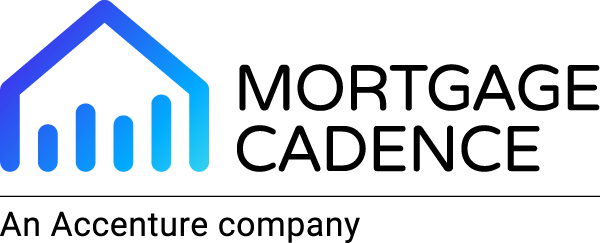Those who haven’t spent decades in the home finance industry might look at the endless negative news reports about slower growth in home values, falling sales and rising rates and think that the housing industry is imploding.
They don’t know that this is a cyclical business. There are peaks and troughs in the mortgage business that are driven by many factors. Mortgage interest rates constitute only one of these factors. By itself, it’s not enough to keep the mortgage business down. It never has been.
In reality, the biggest driver of the mortgage industry is the demand for housing and the ability of consumers to qualify for home financing. Those factors are dependent upon many more.
I’ll speak to some of the factors that drive the industry in an attempt to show that what goes down will inevitably rise again, just as the housing industry has done over the past many decades.
There are many factors at play in housing demand
Cable news commentators pretend that mortgage interest rates are the only indicator of the health of the home finance business. That’s probably the only indicator they understand. In addition to mortgage interest rates, there are several other factors that affect the home finance market, including:
Economic conditions
The overall state of the economy, including inflation, employment levels, and consumer confidence, can significantly impact the home finance market. During a recession or economic downturn, for example, people may be less likely to buy or invest in a home, which can cause a slowdown in the housing market. Likewise, the rise of a new industry may cause a real estate boom.
Government policies
Government policies, such as tax incentives for homeownership or changes in regulations on lending practices, can also affect the home finance market. For example, the Tax Cuts and Jobs Act of 2017 reduced the tax benefits of homeownership, which could potentially discourage some individuals from purchasing a home.
Demographic changes
Changes in population demographics, such as the aging of the baby boomer generation or changes in immigration patterns, can also impact the home finance market. For example, as baby boomers retire and downsize, there may be an increase in demand for smaller homes or rental properties.
Real estate market conditions
The state of the real estate market, including housing inventory, home prices, and supply and demand dynamics, can also impact the home finance market. In areas with low inventory and high demand, for example, home prices may increase, making it more difficult for some individuals to afford a home.
Credit availability
The availability of credit and lending standards can also impact the home finance market. During the financial crisis of 2008, for example, lending standards tightened significantly, making it more difficult for many individuals to obtain a mortgage.
Which interest rates matter for mortgage demand
This is not to say that interest rates don’t have an impact on demand. Mortgage interest rates are often the primary driver of cash out refinances. Mortgage interest rates, when filtered across consumer optimism will also have an impact on mortgage demand, but it’s rarely the most powerful driver.
If a family must relocate to take advantage of a new job opportunity, mortgage interest rates will be considered a necessary cost to allow the family to meet its primary need of moving to a new city. Mortgage interest rates impact affordability, which can be a factor influencing demand, but again, not the most powerful one.
When mortgage interest rates are low, it can make it easier for individuals to afford a home or refinance their existing mortgage, which can stimulate demand in the housing market if consumers have a reason to move or refinance.
Conversely, when mortgage interest rates are high, it can make it more difficult for individuals to afford a home or refinance, which can slow down demand in the housing market.
But if the consumer decides to move or is forced to move, higher than historically low interest rates will not be enough to stop them.
Which interest rates don’t really matter for mortgage demand
The interest rates that have little to no impact on mortgage demand are the ones that get the most coverage on cable news. When the Fed raises the prime rate it charges banks for money, some banks may raise mortgage interest rates in response, but most will not react in this way.
This is primarily because mortgage lenders don’t rely on Fed funds to make mortgage loans, at least not directly. They sell the mortgages to secondary market investors who go to the capital markets for liquidity.
That makes it hard to find a correlation between the Fed’s rate and the mortgage interest rate and why we will often see mortgage interest rates fall in response to the Fed’s actions, as we did the last time it raised the prime rate.
If you want an indicator that is more closely correlated with mortgage interest rates, you’ll be looking for the 10-year Treasury bond, which is a benchmark for long-term interest rates in the financial markets. It represents the yield that investors expect to earn by holding the bond for 10 years.
The yield on the 10-year Treasury Bond serves as a reference point for lenders when setting mortgage interest rates. Lenders typically add a certain percentage, known as a "spread" or "margin," to the 10-year Treasury yield to account for factors such as credit risk, administrative costs, and profit margin.
When the yield on the 10-year Treasury Bond rises, it indicates that investors are demanding higher returns on their investments. This increase in yield reflects a higher cost of borrowing for the government, which in turn affects other interest rates in the economy. Consequently, mortgage lenders may also raise their rates to maintain their desired profit margin, leading to an increase in mortgage interest rates.
Conversely, when the yield on the 10-year Treasury Bond declines, it suggests that investors are willing to accept lower returns. This decrease in yield signals a lower cost of borrowing for the government, which can translate into lower interest rates across the economy. As a result, mortgage lenders may lower their rates, making borrowing more affordable for home buyers.
It's important to note that mortgage interest rates are influenced by various other factors, such as inflation, the overall state of the economy, the Federal Reserve's monetary policy, and the demand for mortgages. These factors, along with the yield on the 10-year Treasury Bond, collectively determine the prevailing mortgage interest rates at any given time.
But all of this is beyond the ken of the average home buyer. All they typically know is what they hear on the news and what their trusted financial advisors tell them.
What their advisors should be telling them now is that home prices are normalizing and interest rates have stopped rising, which both speaks to higher affordability. At the same time, the jobs market is still strong, which means people will be able to pay their mortgage.
Inventory is still low, but that’s no reason not to start looking for their next dream home. When they find it, and they eventually will, the mortgage industry will be ready to help them finance it.
By Joe Camerieri, EVP, Sales & Strategy at Mortgage Cadence
Want more?
Follow us on LinkedIn to be notified when our next article is released.
Media Contacts
Mortgage Cadence:
Alison Flaig
VP, Marketing
(919) 906-9738



